What's New
Displaying results 2471 - 2480 of 4052
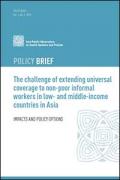
Resource | Publications,
Many low- and middle-income countries (LMICs) in Asia have adopted the goal of universal health coverage. In principle, universal coverage includes providing financial protection to the whole population. This is a goal. In practice, universal coverage cannot be achieved at once, but involves progress along a path towards achieving complete population coverage. This is especially true in LMICs, where resources are constrained and per capita health expenditures are low. Experience shows that LMICs generally begin on the pathway to universal coverage by implementing different prepayment mechanisms targeted at particular sections of the population.
The implementation of prepayment mechanisms for non-poor informal workers in LMICs is a relatively new policy area, with many unresolved issues. Questions being raised are whether compulsory schemes such as social health insurance (SHI) are effective in covering nonpoor informal workers, whether voluntary schemes such as communitybased health insurance (CBHI) can be used to scale-up coverage of non-poor informal workers, and whether complete subsidization of non-poor informal workers can create perverse incentives for remaining in or moving into informal employment.
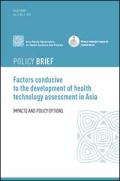
Resource | Publications,
With universal health coverage (UHC) high on the global health agenda, governments of many low- and middle-income countries (LMICs) have pledged to increase health investment in the scale-up of essential health services to meet the needs of their people. This has led to the recognition of health technology assessment (HTA) as a necessary tool for setting priorities especially in the UHC context. This Policy Brief was developed based on experiences from six settings – China, Indonesia, the Republic of Korea, Malaysia, Thailand and Viet Nam – which represent approximately one sixth of the world’s population. The Policy Brief highlights the problems and evidence concerning HTA development in the Asia Pacific region and makes recommendations that may be potentially applicable to settings in other regions.
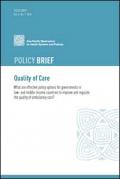
Resource | Publications,
This policy brief aims to provide guidance for policy-makers in low- and middle-income countries (LMICs) in the Asia Pacific region on actions that governments can take to improve and regulate quality of care in ambulatory care services. There is increasing evidence of the very poor quality of ambulatory care in LMICs. Current strategies to address quality of care in these countries such as accreditation have tended to focus on hospitals. But ambulatory care accounts for the largest share of out-of-pocket expenses in LMICs and is key to addressing the double burden of communicable and noncommunicable disease.
This brief draws on available evidence of factors influencing quality of care and strategies to improve quality of care in the ambulatory care sector. Although there is a large body of literature addressing quality of care in high-income countries, this is an emerging field of research for LMICs.

Resource | Presentations,
Fifth National Conference on AIDS
ENDING AIDS BY 2030 Where are we in Asia and opportunities for Indonesia
28 October 2015
Makassar, Indonesia
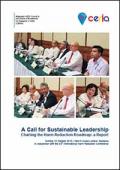
Resource | Publications,
Harm reduction in Malaysia has seen growth from the year 2005 to where we stand now in 2015. Collaborative efforts between the Ministry of Health, the Ministry of Home Affairs, the Prisons Department, the Malaysian AIDS Council and many nongovernmental organisations (NGOs) have allowed access to Opioid Substitution Therapy (OST) and Needle Syringe Exchange to 74,816 and 85,593 clients cumulatively.
On 18th October 2015, in the margins of the 24th International Harm Reduction Conference in Kuala Lumpur, stakeholders in Malaysian harm reduction programs, including the Malaysian Ministry of Health, the National Anti-Drugs Agency, the Centre of Excellence for Research in AIDS (CERiA), addiction psychiatrists, the Addiction Medicine Association Malaysia (AMAM), the Royal Malaysian Police, the Centre for Drug Research, Universiti Sains Malaysia, and people who use drugs convened to discuss the Next Leap Forward in Harm Reduction in Malaysia. This report documents their discussions and makes several key recommendations.
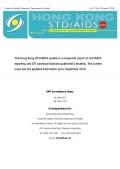
Resource | Publications,
The Hong Kong STD/AIDS update is a composite report on HIV/AIDS reporting and STI caseload statistics published 3 monthly. The current issue has the updated information up to September 2015.
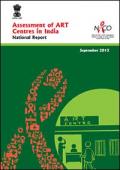
Resource | Publications,
Following almost a decade of ART service provision across the country, NACO commissioned a countrywide assessment of the ART centres from January 2014 to March 2015. The overall goal of the review was two-fold. One was to review the quality of ART service delivery in the country. The second was a validation of the data recorded and reported by ART centres to assess data quality and integrity.
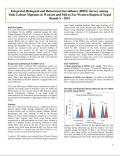
Resource | Fact Sheets,
This is the fifth round of Integrated Biological and Behavioral Surveillance Survey (IBBS) conducted among the Male Labour Migrants (MLM) of 11 districts of Western (5) and Mid to Far Western (6) Regions of Nepal. Primarily, this survey was carried out to track the trend in prevalence of HIV among MLMs and to explore the sexual risk behaviors associated with the HIV infection. This survey was carried during July-September 2015. Two stage 30 cluster sampling method was adopted in this survey. Desired numbers of participants were selected on the basis of population proportion to size from selected clusters. Each of Village Development Committee/Municipality/Sub-Metropolitan city of the selected districts of Western and Mid to Far Western Regions were considered clusters.
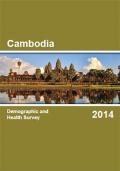
Resource | Publications,
The primary objective of the CDHS is to provide the Ministry of Health (MOH), Ministry of Planning (MOP), and other relevant institutions and users with updated and reliable data on infant and child mortality, fertility preferences, family planning behavior, maternal mortality, utilization of maternal and child health services, health expenditures, women’s status, and knowledge and behavior regarding HIV/AIDS and other sexually transmitted infections. This information contributes to policy decisions, planning, monitoring, and program evaluation for the development of Cambodia at both the national and local government levels.
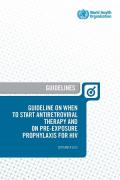
Resource | Guidelines,
This early-release guideline makes available two key recommendations that were developed during the revision process in 2015. First, antiretroviral therapy (ART) should be initiated in everyone living with HIV at any CD4 cell count. Second, the use of daily oral pre-exposure prophylaxis (PrEP) is recommended as a prevention choice for people at substantial risk of HIV infection as part of combination prevention approaches. The first of these recommendations is based on evidence from clinical trials and observational studies released since 2013 showing that earlier use of ART results in better clinical outcomes for people living with HIV compared with delayed treatment. The second recommendation is based on clinical trial results confirming the efficacy of the ARV drug tenofovir for use as PrEP to prevent people from acquiring HIV in a wide variety of settings and populations.





